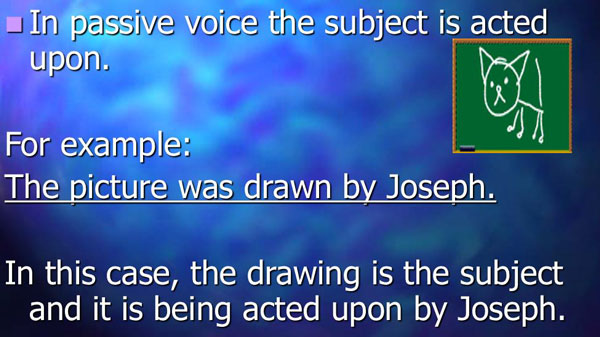| Grammar and language use; Active and passive voice |
|---|
| Assessment questions |
This is the form of a verb that shows whether the subject of the verb does the action (passive voice) or whether the action is done to the subject (active voice).
In a sentence using active voice, the subject of the sentence performs the action expressed in the verb.:

Here is a video on active and passive voice:
In passive sentences, the thing receiving the action is the subject of the sentence and the thing doing the action is optionally included near the end of the sentence.
You can use the passive form if you think that the thing receiving the action is more important or should be emphasized.
You can also use the passive form if you do not know who is doing the action or if you do not want to mention who is doing the action.
[Thing receiving action] + [be] + [past participle of verb] + [by] + [thing doing action]
Examples:

Study the table below:

Here are examples of sentences written in both the active voice and the passive voice, with the active voice sentence appearing first:
Harry ate six shrimp at dinner. (active)

At dinner, six shrimp were eaten by Harry. (passive)
Beautiful giraffes roam the savannah. (active)
The savannah is roamed by beautiful giraffes. (passive)
Sue changed the flat tyre. (active)

The flat tire was changed by Sue. (passive)
We are going to watch a movie tonight. (active)
A movie is going to be watched by us tonight. (passive)
In active sentences, the thing doing the action is the subject of the sentence and the thing receiving the action is the object. Most sentences are active.
[Thing doing action] + [verb] + [thing receiving action]
Examples:
